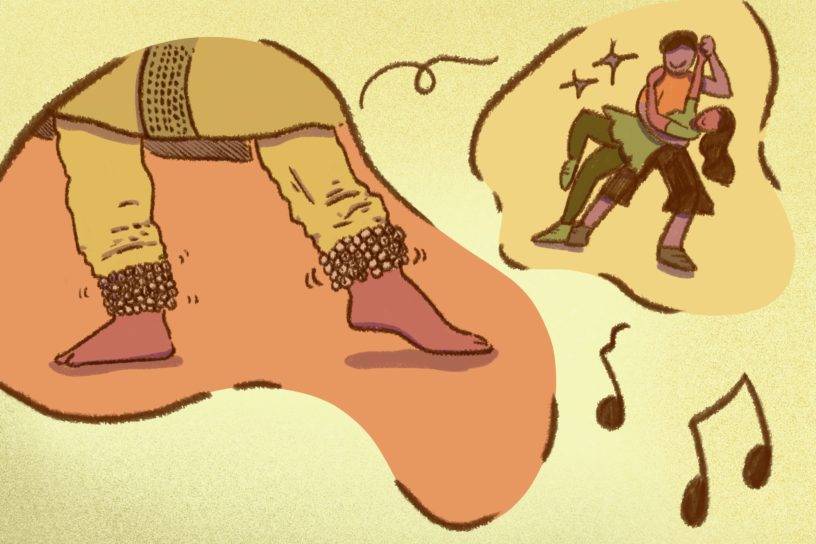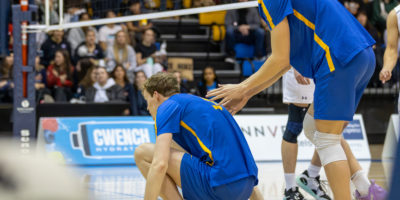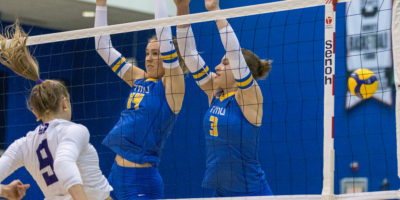By Sofie Gelder
From Sept. 16 to 20, the Recreation and Athletic Centre at Toronto Metropolitan University (TMU) held free salsa, Afro-dance, Bollywood, kathak and K-pop dance classes for students in preparation for the university’s Learn To DANCE! program.
While dance lessons at TMU have long existed, this specific program was created last year. It contributes to “the breaking down of cultural barriers and promoting unity” according to a description from TMU’s events page.
Usha George, a social work professor at TMU, said these events can help with the development of identity and self-concept.
“It’s important for [students] to realize they’re valued and recognized within their university,” she said.
Salsa
Salsa originated in the 1940s but has evolved into various styles from around the world, including Puerto Rico, Colombia and New York City.
In the first class, students were taught Los Angeles-style salsa, the dance’s most popular form.
Eliana Aleman, a second-year film student, moved from Montreal, where she was strongly engaged in the Latin community, to Toronto.
“It’s nice to have a little pocket of your own culture represented on campus where you can feel at home,” she said.
Afro-dance
Kori Gulotta, the Afro-dance class instructor, said her teaching is specifically from the Malian Empire.
“The movement is always syncopated with the percussion and the polyrhythms of the music,” she said.
Gulotta emphasized that feet connect dancers to the rhythm so students were instructed to remove shoes and socks for the hour.
“Dance and music resonate with the heart and soul of a person”
Hermes Salehi, a first-year financial mathematics student, looked forward to diverse opportunities at TMU and compared exploring cultures to expanding one’s music taste.
“It’s nice to ‘shuffle play’ instead of listening to the same playlist all the time,” said Salehi.
Bollywood
Bollywood-style dance gained popularity after the Hindi film industry began in the 1930s. In the demo class, the choreography allowed students to incorporate their own creative elements.
For Alizay Rizbi, a second-year nursing student, Bollywood films were always playing on the television when she was growing up.
“I’ve always been into Bollywood,” she said. ”Now, I really want to learn [the dance style].”
The class was nostalgic for Khushbu Mirchandani, a first-year economics and finance student who enjoyed the energy in the studio.
“I saw so many people from different cultures trying their best,” she said. “I felt joy and pride.”
Kathak
Kathak is a classical dance form which originated in Northern India, but has developed through the influence of Hindu and Muslim cultures over time.
Kathak includes intricate footwork so students were introduced to the basics in the demo class.
“The more students engage, the more they will build an appreciation for the meaning of the dance,” said dance instructor Aayush Chakravatti.
“It’s nice to have a little pocket of your own culture represented on campus where you can feel at home”
Qazi Sabir, a third-year computer engineering student, joined the class with friends after they saw a social media post about the event.
He attended Kathak performances back home in Pakistan and had been eager to give it a try.
“Watching people perform in the traditional style, wearing ghungroos [a string of small bells worn around the ankles during the dance] is really beautiful,” he said.
K-Pop
K-pop dance emerged in the late 20th century in Korea and has gained global popularity by incorporating styles like hip-hop and even Afro-dance.
Emmanuel Buraga, a second year aerospace engineering masters student, said his interest began in high school, but he didn’t start dancing until several years later.
“Interaction within the community is a big part of the culture so it’s important to have a dedicated space at TMU,” he said.
Gulotta said dance can help bridge cultural gaps.
“Dance and music resonate with the heart and soul of a person,” she said. “The universality of dance speaks to common ground we share.”












Leave a Reply